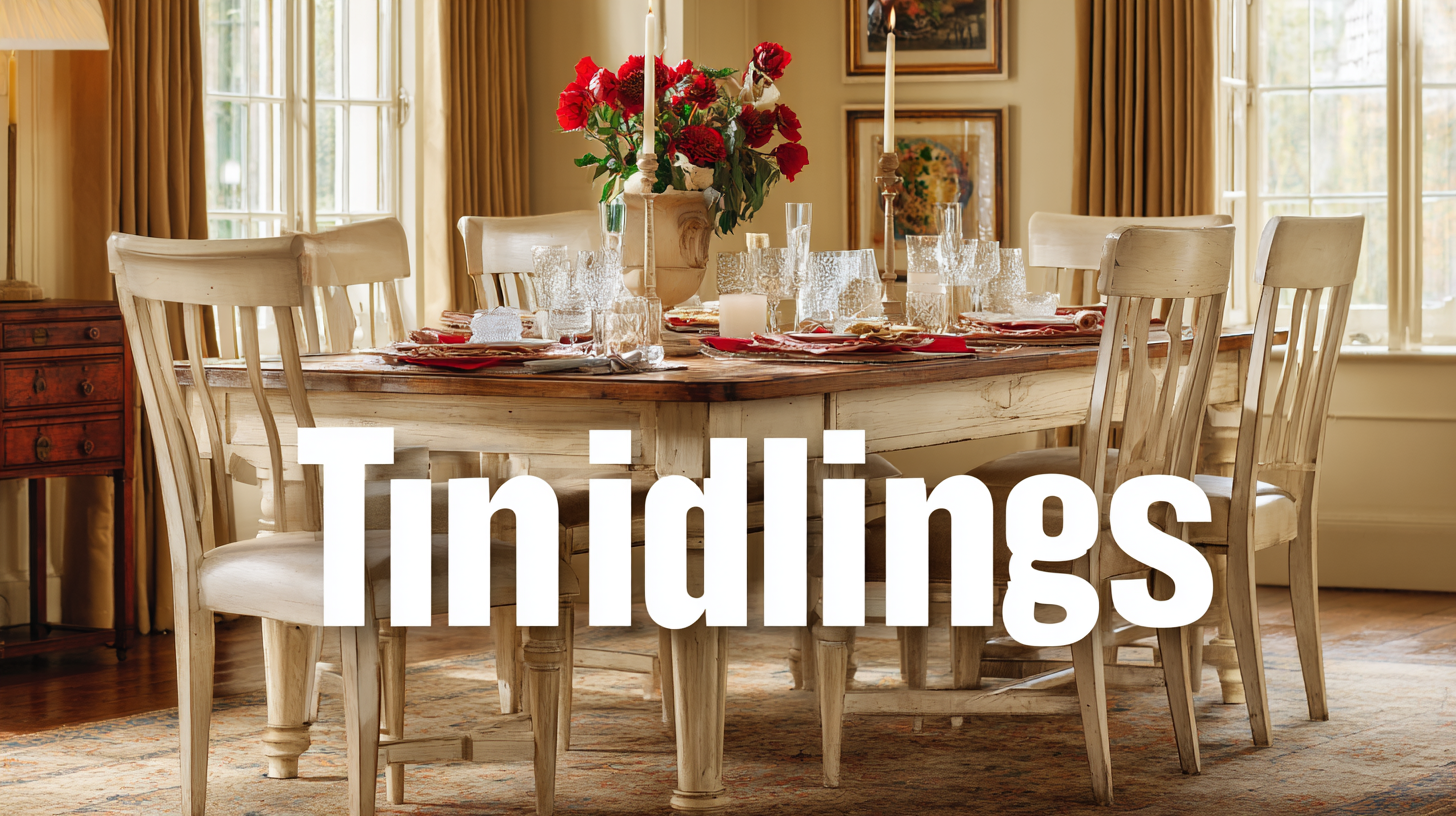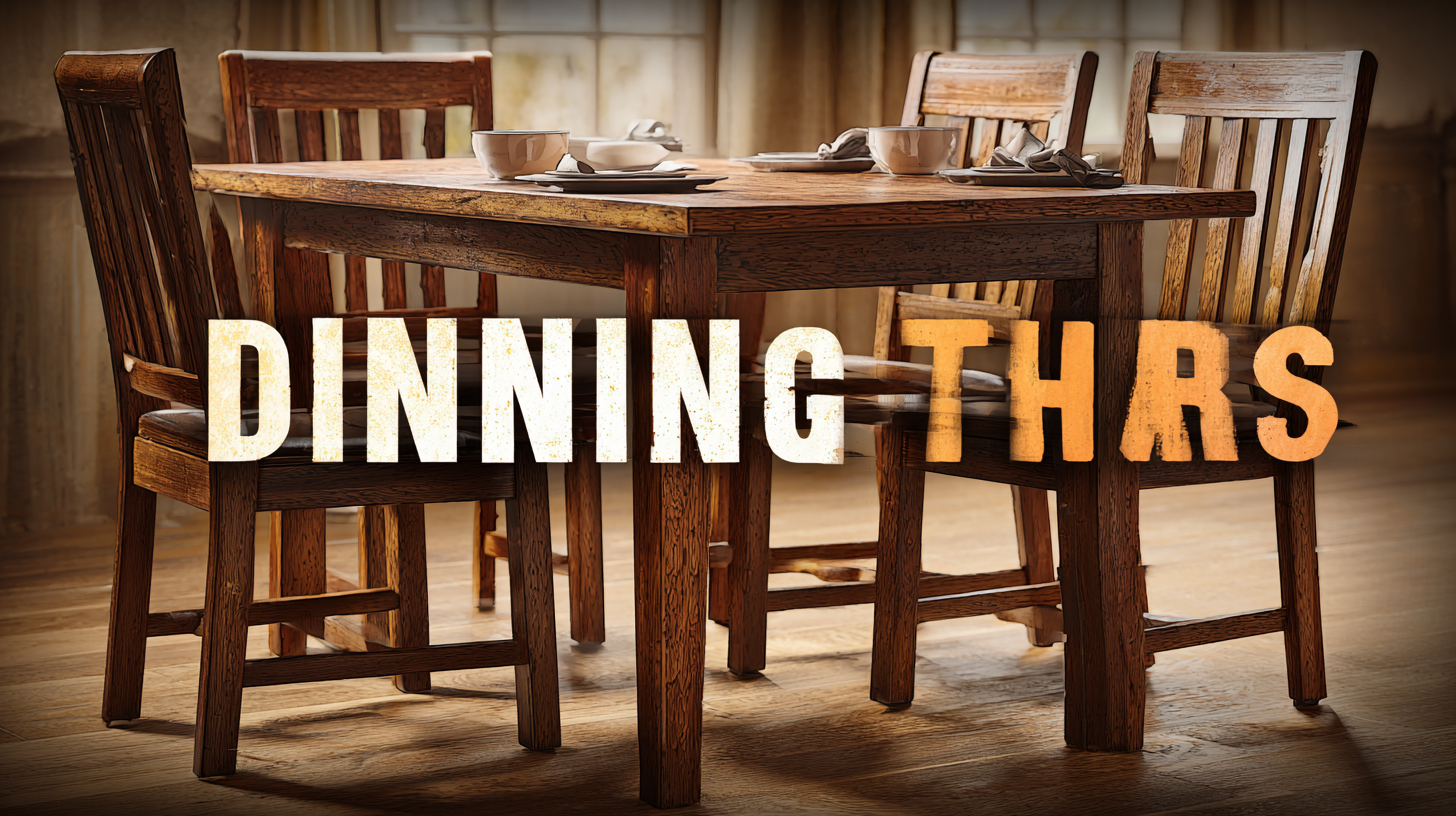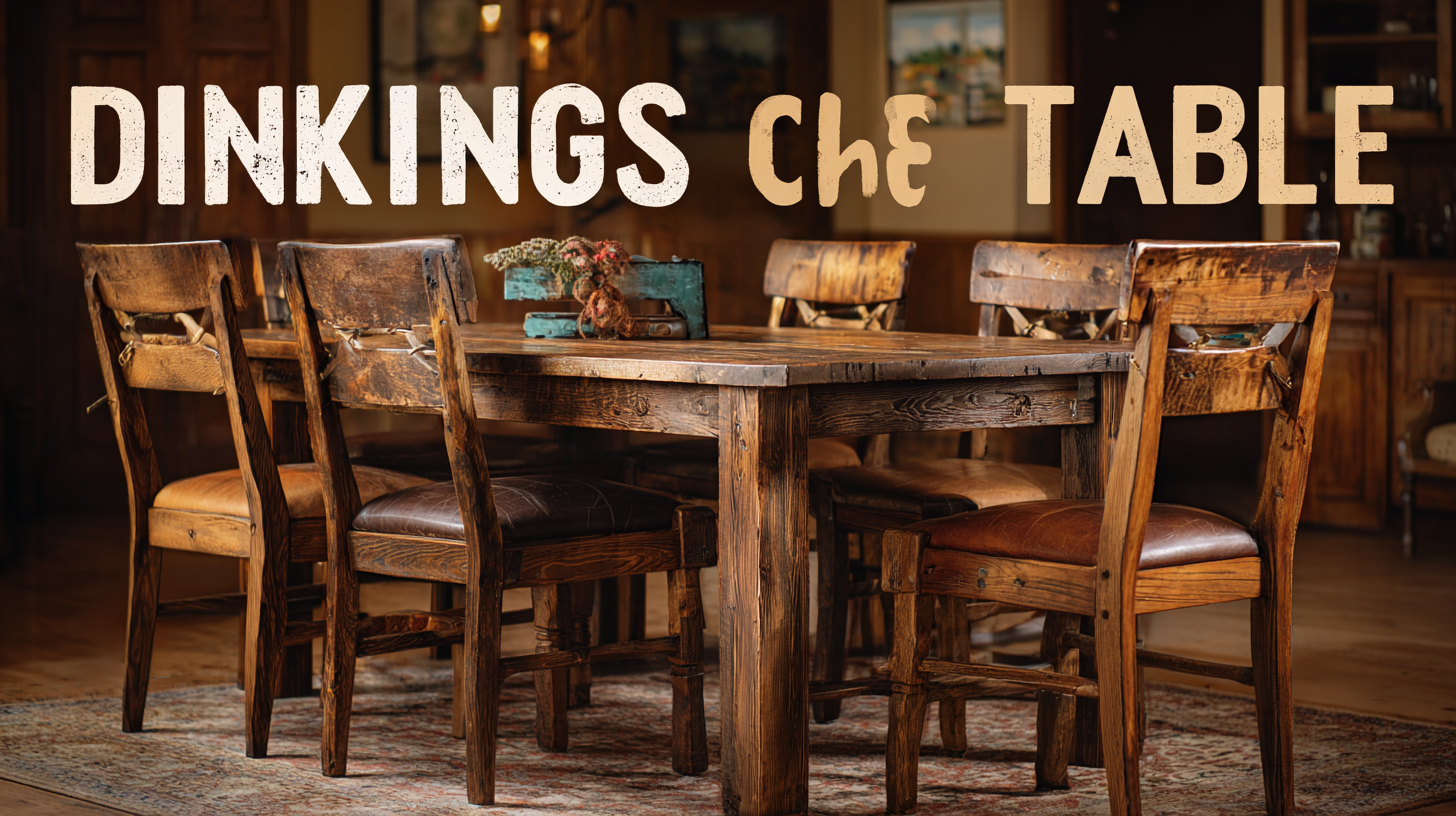
The Complete Guide to Choosing the Best Dining Tables with Chairs for Your Market
As we approach 2025, the furniture industry is poised for significant transformation driven by advancements in technology and changing consumer preferences. According to a recent market research report, the global market for dining tables with chairs is expected to grow by over 6% annually, reflecting an increasing demand for modern designs, sustainable materials, and multifunctional spaces. This surge is not only fueled by the rise of remote work and the need for versatile home environments but also by innovations in manufacturing processes that enhance customization and reduce lead times.
With consumers increasingly prioritizing quality and style in their dining furniture choices, understanding the trends shaping this market segment is crucial for retailers and manufacturers alike. In this complete guide, we will explore how to choose the best dining tables with chairs to cater to the evolving tastes of consumers while aligning with the anticipated industry trends of 2025.

Choosing the Right Size Dining Table for Your Space
When choosing the right size dining table for your space, it’s essential to start by considering the dimensions of your dining area. A common rule of thumb is to allow for at least 36 inches of space between the table and the walls or furniture to ensure comfortable movement. This means if you have a kitchen or dining room that is, for example, 120 square feet, your dining table should ideally occupy no more than 10 percent of that space. Keeping this guideline in mind helps prevent the awkward feeling of being cramped, especially during gatherings.
Additionally, think about your regular dining needs. If you frequently host guests or have a large family, opt for a table that comfortably seats everyone—typically, a rectangular table is optimal for larger groups. For smaller households or tighter spaces, consider options like extendable tables or round designs that can maximize accessibility and flow in the room. Ultimately, the perfect dining table and chair set should create a harmonious balance in your space while reflecting your personal style and accommodating your lifestyle.
The Complete Guide to Choosing the Best Dining Tables with Chairs for Your Market - Choosing the Right Size Dining Table for Your Space
| Table Size | Number of Chairs | Ideal Room Size | Shape |
|---|---|---|---|
| Round (42 inch) | 4-5 | 100-120 sq ft | Round |
| Rectangular (60 inch) | 6-8 | 150-200 sq ft | Rectangular |
| Square (48 inch) | 4-6 | 100-150 sq ft | Square |
| Oval (72 inch) | 6-8 | 150-200 sq ft | Oval |
| Large Rectangular (96 inch) | 8-10 | 200+ sq ft | Rectangular |
Understanding Different Dining Table Shapes and Their Benefits
When selecting a dining table, understanding the different shapes available and their unique benefits is crucial.
Round tables, for instance, foster an intimate ambiance, making them perfect for smaller gatherings.
They promote conversation and allow for ease of movement, especially in compact spaces. On the other hand,
rectangular tables are ideal for larger gatherings, providing ample space for food and guests.
They can also fit well in elongated dining areas, maximizing the seating capacity.
Tips for choosing the right shape include considering the size of your dining area and the number of people you typically host.
If you have a small space, opt for a round or square table that can be extended when needed.
For those who enjoy hosting larger dinner parties, a rectangular table with leaves could provide the flexibility to accommodate guests without sacrificing style.
Additionally, oval tables combine the benefits of both round and rectangular shapes, offering a generous surface area that encourages conversation while still fitting into more narrow spaces.
When selecting your table, think about the style of chairs you want to pair with it, as this can influence the overall aesthetic and comfort of your dining experience.
Selecting the Perfect Chair Styles to Complement Your Table
Selecting the perfect chair styles to complement your dining table is crucial in creating a harmonious dining experience. According to a recent report by IBISWorld, the furniture industry has seen a significant surge, with dining room furniture experiencing a growth rate of 3.4% annually. This trend underscores the importance of choosing chairs that not only match aesthetic preferences but also align with market demands.
When considering chair styles, think about the material and construction quality that resonates with modern consumers. For instance, a 2022 survey by Statista revealed that 54% of buyers prioritize durability in their dining furniture choices. Upholstered chairs are popular for their comfort and style, while wooden chairs tend to offer a timeless look. Ensuring that the chair style complements the dining table in both color and design can enhance the overall dining atmosphere, making the space inviting and cohesive for families and guests alike.

Key Materials for Dining Tables: Durability vs. Aesthetics
When selecting dining tables and chairs, understanding the key materials is crucial for balancing durability and aesthetics. According to a recent report from the National Furniture Association, nearly 60% of consumers prioritize longevity in their furniture purchases, yet they also desire visually appealing designs. This highlights the importance of choosing materials that not only withstand the test of time but also complement home decor.
Wood, for example, remains a popular choice due to its natural beauty and strength. Hardwoods like oak and maple are particularly sought after, boasting a lifespan of over 20 years when properly maintained. However, customers are increasingly considering engineered woods, which offer similar aesthetic qualities while being more cost-effective and sustainable. On the other hand, materials such as glass and metal introduce a contemporary flair but may require more careful handling and maintenance to avoid potential damage or scratches.
In terms of trends, a survey conducted by Statista found that 47% of buyers consider eco-friendly materials when making decisions, indicating a shift towards sustainability without compromising on style. As consumers continue to seek dining tables and chairs that reflect both durability and aesthetics, manufacturers must be responsive to these dual demands, ensuring they provide options that satisfy the modern homeowner's expectations.
The Best Materials for Dining Tables: Durability vs. Aesthetics
Maximizing Comfort: Finding the Right Height for Tables and Chairs
When selecting dining tables and chairs, one of the most critical aspects to consider is the height of the furniture. The right height not only enhances the dining experience but also contributes significantly to comfort. Generally, dining tables are about 28 to 30 inches high, while chairs should have a seat height of around 17 to 19 inches. This combination ensures that diners can sit comfortably with their feet flat on the ground, allowing for a more relaxed posture during meals.

Equally important is factoring in the style and functionality of your dining area. For families with small children, lower table and chair heights may be more practical, allowing easy access for little ones. However, if you frequently entertain guests, a standard height set may facilitate a more sophisticated atmosphere. In addition to height, consider the presence of cushions on chairs, as these can add an extra layer of comfort and influence the overall seating height. Ultimately, finding the right balance in height and design will help create a welcoming dining space that everyone can enjoy.